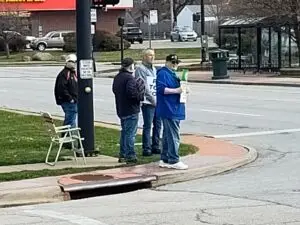
Male Protesters Demonstrate at Northeast Ohio Women’s Center
Cuyahoga Falls, OH – On Saturday, March 29, 2025, the Northeast Ohio Women’s Center, located at 2127 State Road, became the scene of a male-led
E-mail Us
Open by Appointment Only
Contact our 24-hour customer care team
Contact our 24-hour customer care team
Ohio Security & Investigations
We’re ready to help
In today's world, characterized by rapid change and uncertainty, the demand for outstanding security and investigative services has risen significantly. This surge is largely due to increasing crime rates that often go unreported, alongside the restructuring and staffing challenges that law enforcement agencies face within an ineffective judicial system. As societal issues evolve, so do the threats to our safety and privacy, necessitating a holistic approach to security management. Our dedicated team is committed to delivering tailored solutions across key regions such as East Palestine, Columbiana, Youngstown, Warren, Ashtabula, Cleveland, Akron, and Canton. We aim not only to instill a sense of security in our clients but also to empower them through proactive security measures and investigative support. Below, you will find a selection of the services we provide:
We provide a comprehensive array of private investigation services, meticulously designed to cater to the distinct needs of each client. Our areas of expertise include locating individuals, skip tracing, FMLA investigations, cohabitation inquiries, infidelity investigations, and cases involving missing children and persons, as well as surveillance. With years of experience under our belts, our dedicated team approaches every case with the highest standards of confidentiality and professionalism. Our unwavering commitment to uncovering the truth and achieving favorable outcomes grants our clients the peace of mind they seek. Whether you are an individual seeking personal clarity or a corporation in need of investigative services, we deliver exceptional quality. From locating missing children to conducting surveillance in infidelity cases, we possess the expertise and resources to handle any situation effectively. You can rely on us to address your circumstances with the utmost sensitivity and discretion, rooted in our steadfast commitment to confidentiality and professionalism. We recognize the significance of uncovering the truth and are wholly devoted to securing successful results for our clients. Whether you are navigating infidelity concerns, suspecting cohabitation by an ex-spouse, or require comprehensive background checks for your business, our team is prepared to assist you. Reach out to us today to discover how we can customize our services to meet your specific needs and provide you with the peace of mind you deserve. Allow us to help you unveil the truth and move forward with confidence.
Our foremost mission is to provide steadfast protection for businesses around the clock, including on weekends. In a time of growing uncertainty—especially concerning law enforcement's response to non-emergency situations such as vandalism, theft, harassment, burglary, domestic violence, and workplace disputes—the safety and security of our clients in Northeastern Ohio is our utmost priority. Our vigilant approach extends beyond simple monitoring; it represents a proactive security strategy tailored to meet the distinct needs of each client. We understand that every business faces its own unique challenges and vulnerabilities. That is why our process starts with a thorough assessment of your premises, allowing us to create customized security solutions. By maintaining consistent communication and fostering a strong partnership with you, we ensure that our security protocols evolve alongside your business's changing needs. Our team is equipped with cutting-edge technology, including advanced surveillance systems and real-time reporting tools, to enhance our physical presence. Moreover, our commitment goes beyond merely reacting to incidents; we prioritize prevention through comprehensive employee training and awareness programs, equipping your staff with the knowledge to identify and address potential risks before they escalate. This holistic approach not only nurtures a culture of safety within your organization but also enhances employee morale. When you choose Ohio Security & Investigations, you are not just selecting a service provider; you are investing in a strong security partnership dedicated to your well-being. With our unwavering commitment to creating a safe environment for your employees and customers, we are ready to serve. For a consultation and to learn how our 24-hour security guard services can safeguard your business, please reach out to us today. Together, we can build a secure future for your organization and its people. Your safety is our mission, and we are here to fulfill that mission every hour of every day. We are committed to empowering our staff to tackle challenges with confidence. Each security guard undergoes rigorous classroom training in addition to completing a variety of online courses. This unwavering dedication to skill enhancement distinguishes us in the industry. You can trust that our highly trained and experienced team is wholly devoted to ensuring the safety of you and your employees, fostering a secure environment at all times. For businesses in East Palestine, Columbiana, Youngstown, Warren, Ashtabula, Cleveland, Akron, and Canton, our 24-hour security guard services in Northeastern Ohio provide the peace of mind you truly deserve.
In today's fast-paced environment, the demand for reliable background checks is crucial for individuals, licensing agencies, and organizations. Ohio Security & Investigations, in partnership with 10-8 Protective Services, is your trusted provider for BCI and FBI background check Livescan fingerprinting services. Proudly an Ohio Web Check location, we deliver accurate and efficient results for clients in Akron, Cuyahoga Falls, Tallmadge, and Stow, Ohio, from our conveniently located office on Portage Trail. We prioritize prompt service, welcoming walk-ins every Tuesday and Thursday from 9 AM to 3 PM and offering flexible scheduling options to accommodate your busy lifestyle. Our fingerprinting services meet the requirements of a diverse range of professionals, ensuring compliance for educators, healthcare providers, and more. With competitive pricing—$42 for BCI checks, $45 for FBI checks, and a discounted rate of $80 for both—we also extend discounts to law enforcement, military personnel, veterans, and seniors. We value our relationships with clients and strive to foster trust and reliability. Our dedicated team ensures that background checks are both accurate and efficient. Whether for employment, licensing, or personal purposes, we offer tailored solutions to meet your specific needs. For dependable fingerprinting services and exceptional care in Northeastern Ohio, contact us at (800) 949-8521 to schedule your appointment and experience the peace of mind that comes from partnering with us.
We prioritize both affordability and transparency in our process serving. We ensure that our clients are well-informed at every step of the journey. Our standard service begins at just $95, with expedited options available for an additional fee of $149 for next-day service and $199 for same-day service. For both in-state and out-of-state cases, we charge a mileage fee of $0.67 per mile for any distance beyond 20 miles, while documentation exceeding 25 pages incurs a nominal fee of $0.25 per page. Additional fees may apply depending on the specifics of your case, including $75 per person per address, $149 for skip tracing, and $75 for each hour of wait time exceeding ten minutes. If you need precise timing for serving an individual or business, we charge $75 per hour in addition to the mileage fee of $0.67 per mile. Our surveillance services are exceptional and come at a rate of $75 per hour, with a minimum commitment of four hours. We kindly ask that all invoices be paid in advance—this policy applies even to Serve Now or NAPPS members, unless you have an established account with us. Our commitment is to deliver the highest quality service, and we look forward to assisting you. Discounts are available for bulk orders or repeat services, so don’t hesitate to reach out to discuss your specific needs. Our goal is to make the process as seamless and stress-free as possible, whether you are facing a legal matter, a personal issue, or a business concern. Count on us for professional and discreet handling of your case. We understand that navigating the legal system can be daunting, and we provide superior support and service throughout your journey. Contact us today to learn more about our process serving, surveillance, or skip tracing offerings. We proudly serve Columbiana, Mahoning, Trumbull, Ashtabula, Portage, Lake, Geauga, Summit, and Stark Counties in Ohio, as well as Mercer, Lawrence, and Venango Counties in Western Pennsylvania. We are committed to delivering the best possible service at affordable rates every step of the way.

Our firm has a valid license from Ohio Homeland Security's Private Investigator Security Guard Services (PISGS) (#20212100425488). We adhere to state regulations to deliver investigative and security services with professionalism and confidentiality. Our trained and experienced team ensures exceptional results. We commit to upholding the law, providing safety and security to our clients. Trust us for peace of mind and protection.
Our team comprises experienced professionals, including retired law enforcement and ex-military personnel, as well as former surety bail bond agents with experience in fugitive recovery. Each member brings a wealth of expertise and insight to our work. Our top priority is upholding the highest standards of professionalism and confidentiality, and we consistently exceed our clients' expectations with exceptional service. In addition to our current offerings, we are continuously expanding our services to meet the evolving needs of our clients. Our commitment to providing the highest quality of service means that we are always seeking new and innovative ways to better serve our clients. We continue to invest in the latest technologies and training for our team to ensure that we are always at the forefront of the industry. Our dedication to professionalism and confidentiality is unwavering, and we endeavor to go above and beyond for every client we serve. Whether it's providing top-notch security guard services or conducting thorough investigations, we are always ready to exceed expectations. We take great pride in the trust that our clients place in us, and we will continue to work tirelessly to maintain that trust. With our team of experts and our unwavering commitment to excellence, we are confident that we can continue to set the standard for exceptional service in our industry.
At the forefront of our priorities is the safety and security of our clients, particularly in light of the growing uncertainty faced by law enforcement agencies in non-urgent situations such as vandalism, theft, harassment, burglary, domestic violence, and workplace violence. We are deeply committed to preparing our staff to handle any potential challenges by mandating all personnel to complete comprehensive classroom training and a series of online courses offered by organizations such as The McAfee Institute, IFPO, NITA, PISGS, FEMA, Ohio’s Human Trafficking Task Force, OBP, NSI, NNA, and the American Red Cross. Additionally, our Tactical Security Officers undergo intensive training, including Executive Protection Training and a Monthly Firearms Training requirement. This steadfast dedication to honing our skills distinguishes us, and you can have complete confidence that our expertly trained and experienced team is wholeheartedly devoted to ensuring the safety and security of you and your employees.
In Ohio, it is mandatory for private investigators to possess a valid license. To offer private investigation services, individuals must secure this license from the Private Investigator Security Guard Services (PISGS). The process of obtaining a license involves successfully passing an extensive background check, meeting specific experience requirements, and completing a rigorous examination. Additionally, licensed private investigators are required to maintain comprehensive general liability insurance, ensuring both their professional integrity and security. Beyond these licensing prerequisites, private investigators in Ohio must also adhere to established ethical standards and professional conduct. The PISGS has outlined guidelines that direct the activities of private detectives, promoting transparency and responsibility in their work. For example, licensed investigators are obligated to respect individuals' privacy rights during their investigations. This entails refraining from actions that could violate privacy laws, such as unauthorized surveillance or accessing confidential information without consent. Breaching these ethical standards may result not only in disciplinary measures from the PISGS but also in potential legal consequences. Furthermore, continuous education is vital for professionals in the field of private investigation. To remain abreast of the latest laws, technologies, and investigative techniques, licensed private investigators are encouraged to engage in ongoing educational programs. This commitment to learning not only enhances their skills but also keeps them informed about regulatory changes that may impact their practice. Lastly, networking with fellow professionals can offer invaluable resources and support. Organizations like the Ohio Association of Private Investigators provide opportunities for networking, training workshops, and advocacy for the profession. Becoming a member of such associations can help private investigators stay connected and tap into a wealth of knowledge within the community. If you are considering a career as a licensed private investigator or are in need of their services, it is advisable to familiarize yourself with both the legal requirements and the professional standards that define this essential profession. For any inquiries or assistance, feel free to reach out to the Private Investigator Security Guard Services (PISGS). To verify if a private investigator is licensed in the state of Ohio, please visit: https://homelandsecurity.ohio.gov/private-investigators-and-security-guards/search-for-licensed-providers/search-for-licensed-providers.
A process server is a dedicated professional tasked with the crucial responsibility of delivering legal documents to individuals or parties involved in court proceedings. These documents may include summonses, complaints, subpoenas, writs, and various other court-related papers. The primary aim of a process server is to ensure that these legal documents are delivered according to the law, thereby making the recipient aware of their participation in a legal matter. Process servers play an indispensable role in the legal system, ensuring due process is upheld by notifying parties of legal actions being initiated against them or requiring their involvement. Proper delivery of these documents is essential for the courts to proceed with their functions. To guarantee that the service of process is valid, process servers must adhere to specific rules and regulations, which can vary by jurisdiction. In addition to their key role of document delivery, process servers often gather proof of service. This usually entails completing a declaration or affidavit confirming the delivery of the documents and detailing pertinent information, such as the time, date, and method of service. This documentation serves as vital evidence in court, demonstrating that the recipient has been duly informed. Process servers frequently encounter challenges in their line of work. They may deal with uncooperative recipients who refuse to accept their documents or individuals who deliberately evade service. In such instances, process servers may need to adopt strategic methods, including conducting stakeouts or enlisting the help of professional skip tracers to locate hard-to-find individuals. Navigating these challenges requires not only legal expertise but also adaptability and strong problem-solving skills. Furthermore, the responsibilities of a process server can vary significantly depending on the type of legal documents being served. For example, serving a summons in a civil lawsuit can differ greatly from delivering eviction notices or court orders. Therefore, process servers must be well-versed in the specific requirements and protocols related to each type of document to ensure legal compliance. The impact of technological advancements on the field of process serving cannot be overlooked. Many process servers now leverage digital platforms to efficiently track deliveries, manage cases, and communicate with clients. This integration of technology not only streamlines operations but also enhances the overall effectiveness and accuracy of the service provided. In summary, the profession of process serving is vital for upholding the integrity of the judicial system. By ensuring that all parties involved in legal proceedings are properly notified, process servers champion the principles of fairness and justice, facilitating smooth and equitable litigation processes. As legal systems evolve, the role of the process server will likely continue to adapt, skillfully blending traditional practices with modern technology to meet the needs of both the courts and the individuals they serve.
Yes, private investigators can serve process in the state of Ohio, but there are specific regulations and guidelines that they must follow. In Ohio, the law allows private individuals, including licensed private investigators, to serve civil process documents such as summonses, complaints, and subpoenas. However, they must adhere to certain legal standards to ensure that the service is valid. To serve process in Ohio, a private investigator must typically possess a valid license issued by the Ohio Department of Public Safety. Additionally, they should be knowledgeable about the rules governing the service of process, which may include understanding the appropriate methods for serving documents, such as personal service, residential service, or service by mail. It is important for private investigators to be aware of the types of documents they are allowed to serve and the proper procedures to follow, as failing to do so can result in a challenge to the validity of the service. Many investigators also choose to work in collaboration with attorneys or law firms to ensure that all legal requirements are met. In summary, while private investigators can serve process in Ohio, it is crucial for them to be properly licensed and informed about the state's regulations pertaining to the service of legal documents. By adhering to these guidelines, they can fulfill their role effectively and help ensure that legal proceedings progress smoothly.
If you suspect that an unlicensed private investigator is operating in Ohio, there are several steps you can take to report them effectively and ensure public safety: 1. Collect Information: Start by compiling all pertinent details about the suspected investigator. This includes their name, contact information, any business name, and the specifics of their activities. Make a note of any evidence pointing to their unlicensed practice, such as advertisements, contracts, or communications. 2. Contact the Ohio Department of Public Safety: The Ohio Department of Public Safety is responsible for regulating private investigators in the state. You can file a complaint by visiting their website or by calling their office directly. Be sure to provide them with all the information you have collected. 3. File a Complaint with the Ohio Private Investigator Security Services Board: This board specifically governs the licensing of private investigators. You can file a formal complaint through their official channels, including their user-friendly online complaint form: [Ohio Private Investigator Complaint Form](https://services.dps.ohio.gov/PISGS/Pages/public/ComplaintForm.aspx). Alternatively, you can text your complaint or tip to (614) 705-2847. 4. Report to Local Law Enforcement: If the actions of the unlicensed investigator appear illegal or threaten public safety, consider reaching out to your local law enforcement agency. Provide them with comprehensive details to assist in any further investigation. 5. Seek Legal Counsel: If you believe you may be a victim of the unlicensed investigator’s actions, or if you require guidance on your rights, consult a legal professional who specializes in licensing and private investigation laws. 6. Raise Awareness: If appropriate, consider sharing your experience with your community or online. This can help protect others from falling victim to potentially harmful practices by unlicensed private investigators. By following these steps, you can help ensure that unlicensed private investigators are reported, and appropriate actions are taken to uphold the regulations and standards in Ohio.
Ohio residents have access to a diverse and exceptional range of private investigation services tailored to meet various needs. These services include trademark investigations, assessments of workplace violence, and inquiries related to workers' compensation. Private investigators frequently manage cases involving sexual harassment, background checks, evaluations of child support, and custody assessments. Their expertise also extends to identity theft investigations and infidelity inquiries, often referred to as cheating spouse investigations, along with the detection of insurance fraud. In today’s digital age, investigative services have adapted to include internet dating investigations, searches for missing persons, and social media inquiries. Ohio’s private investigators are well-prepared to offer specialized assistance in areas such as wrongful death investigations, locating individuals, and vehicle tracking. They excel in skip tracing, conducting both criminal and civil record searches, performing integrity checks, gathering witness statements, and providing surveillance and process serving. With such a comprehensive range of services available, Ohio residents can have confidence that the private investigation assistance they receive is not only extensive but also of the highest quality.
In Ohio, notaries public are authorized to notarize a wide range of documents, including but not limited to: 1. Affidavits: Written sworn statements verified by the oath of the individual making the declaration. 2. Contracts: Legal agreements between parties that often require notarization to confirm the identities of all involved. 3. Wills: Although notarization is not a strict requirement in Ohio, it can provide an extra layer of credibility to the document. 4. Powers of Attorney: Documents that empower one person to act on behalf of another in legal or financial matters. 5. Real Estate Documents: This category encompasses deeds, mortgages, and other property-related paperwork that require notarization for legality in court or official record-keeping. 6. Vehicle Title Transfers: Notarizing these transfers ensures that ownership details are accurate and appropriately documented. 7. School Forms: Various forms required by educational institutions, particularly those involving permissions or health-related information. To carry out the notarization process, a notary public must first verify the identity of the signer using appropriate identification, such as a driver's license or passport, and ensure that the signer is acting voluntarily and understands the document's contents. It is also important to remember that Ohio notaries are prohibited from providing legal advice and may not charge more than the fees prescribed by the state. If you need a document notarized, it's wise to consult the notary about any specific rules or requirements related to your particular document. Additionally, preparing all necessary documents and identification in advance will help expedite the process.
The cost of enlisting the services of a private investigator can vary greatly depending on several factors, such as location, the complexity of the case, the investigator's level of experience, and the specific services you require. Generally, individuals should anticipate paying between $75 and $200 per hour for investigative services. Additionally, many private investigators may request an upfront retainer fee, which can range from a few hundred to several thousand dollars based on the scope of the investigation. Here are some key factors that can influence the overall cost: 1. Type of Investigation: Different cases necessitate different resources. For example, surveillance tends to be more costly than background checks due to the time and equipment involved. 2. Duration of the Investigation: Naturally, longer investigations will lead to higher costs. It’s important to discuss estimated timelines with your investigator before commencing any work. 3. Geographical Location: Costs can vary widely depending on the region. Urban areas typically have higher rates compared to rural settings. 4. Specialized Skills: If the investigation requires expertise in specialized areas, such as cyber investigations or legal matters, this may also increase the overall expense. 5. Travel Expenses: If the investigator needs to travel to gather information, you may incur additional travel expenses on your bill. 6. Expectations and Outcomes: If a client harbors unrealistic expectations for swift resolutions or tasks that demand extensive resources, costs may escalate. Given these considerations, it is wise to obtain quotes from multiple private investigators before making a commitment. Engaging in a detailed discussion about your specific needs can help clarify what services are included in the quoted price and any potential additional costs. In summary, while hiring a private investigator represents a significant investment, the insights and information they provide can be invaluable—often saving clients time, stress, and money in the long run. Always conduct thorough research on the investigator’s credentials and reputation before proceeding. You can also verify their license through the PISGS website at: https://homelandsecurity.ohio.gov/private-investigators-and-security-guards/search-for-licensed-providers.
In Ohio, a process server is allowed to take photographs of you or your residence while serving legal documents. This practice mainly serves to document the delivery of the paperwork, ensuring there is clear evidence that the service was completed accurately. It is a common procedure aimed at preventing disputes regarding the proper execution of the service. However, it is essential to understand that while such photography is permitted, process servers are required to respect privacy laws and maintain reasonable conduct. They are prohibited from trespassing on private property or invading someone’s personal space while serving documents. In Ohio, as in many states, process servers are expected to perform their duties professionally, refraining from causing undue distress or alarm to those they are serving. If you find yourself in a situation where a process server is taking photos near your home, it is best to remain calm and respectful. If you feel comfortable, engaging with the server can help clarify the circumstances. You have every right to inquire about the purpose of their visit and the documents they are delivering. While the server is responsible for handing over legal documents, your rights regarding personal privacy are equally important. Should you suspect that the process server is behaving inappropriately or unlawfully, you can report their conduct to their employer or, if necessary, to law enforcement. Being aware of your rights during such encounters can help alleviate any concerns and ensure that the service of process is carried out lawfully and with respect. Ultimately, staying informed empowers you to navigate the situation confidently should you ever encounter a process server at your doorstep.
When it comes to personal security, many individuals often conflate the terms "Close Protection Officer" (CPO) and "bodyguard." While both roles are integral to ensuring the safety of individuals at risk, they possess distinct responsibilities, training, and operational approaches that set them apart. Roles and Responsibilities: Close Protection Officers are trained specialists who provide comprehensive security services tailored to specific threats faced by their clients. Their responsibilities extend beyond mere physical protection; CPOs conduct risk assessments, plan security measures, and implement strategies to mitigate potential dangers before they arise. They are often involved in advance reconnaissance, evaluating venues, creating secure escape routes, and ensuring the overall safety of the environment in which their client operates. On the other hand, bodyguards, while they may also provide protection, typically focus more on the physical defense of the individual. Their primary role is to act as a shield against direct threats, which often involves confrontation and physical intervention when necessary. Bodyguards may have training in self-defense and physical conflict resolution, but they typically do not engage in the extensive planning or risk assessment processes that characterize the work of a CPO. Training and Skills: The training for a Close Protection Officer is rigorous and multifaceted, often requiring certification through accredited programs. CPOs receive education in risk management, emergency response, threat assessment, first aid, and advanced driving techniques. They are also trained in surveillance detection and counter-surveillance methods, which help them identify and evade potential threats in real time. Bodyguards may undergo training as well, often emphasizing physical fitness and self-defense techniques. However, the scope of their training can vary widely depending on individual backgrounds and the specific needs of the client they serve. Generally, bodyguard training may not always cover the comprehensive security planning aspects that CPOs are well-versed in. Legal Framework: In many jurisdictions, Close Protection Officers operate under a specific legal framework that delineates their authority and responsibilities, often requiring licensing or permits. They might work in collaboration with law enforcement or other security agencies to ensure compliance and the efficacy of protective measures. Bodyguards may face different legal challenges, as their roles often intersect with issues of personal defense and the use of force. Understanding the legalities surrounding their actions becomes paramount, as missteps can lead to legal ramifications. Conclusion: In summary, while both Close Protection Officers and bodyguards share a commitment to personal safety, their functions, training, and legal considerations highlight important differences. Individuals seeking protection should carefully assess their needs and the specific skill sets that each role offers. Whether opting for a CPO’s comprehensive strategic approach or a bodyguard’s physical presence, understanding what each brings to the table is crucial in maintaining security and peace of mind. Choosing the Right Protection Service: When deciding between hiring a Close Protection Officer or a bodyguard, potential clients should consider factors such as the level of threat they face, the context of their daily activities, and their personal preferences. Those in high-risk professions or public figures might benefit more from the in-depth security strategies that CPOs provide, while individuals needing straightforward protection during events may find a bodyguard’s direct approach sufficient. Moreover, it is important to evaluate the experience and credentials of the professionals being considered. Look for providers who have a proven track record, relevant certifications, and a thorough understanding of the specific risks involved in the client’s situation. Engaging in open discussions with potential CPOs or bodyguards about their methodologies and past experiences can illuminate which option aligns best with the individual’s unique security needs. Ultimately, the choice between a Close Protection Officer and a bodyguard is not merely a matter of terminology but rather a reflection of the specific safety requirements and the potential threats posed to the individual. Being informed and prepared ensures that the personal security strategy developed is both effective and tailored to provide the highest level of protection possible.
Livescan fingerprinting is an advanced digital technique used to capture fingerprints and palm prints electronically. This modern approach replaces the traditional ink-and-paper methods, bringing forth numerous advantages, particularly when conducting background checks mandated by the Bureau of Criminal Investigation (BCI) and the Federal Bureau of Investigation (FBI) in Ohio. The importance of Livescan fingerprinting lies in its remarkable accuracy and efficiency. By capturing fingerprints digitally, the resulting images are sharper and more precise, significantly reducing the likelihood of errors in the identification process. Furthermore, Livescan systems can transmit fingerprints directly to the relevant agencies in real-time, accelerating the background check process. This speed is especially vital for employers, licensing boards, and organizations that require swift and reliable safety screenings for new hires or volunteers. In Ohio, the necessity of Livescan fingerprinting has grown in tandem with the rising demand for comprehensive background checks across various sectors, including education, healthcare, and law enforcement. Many positions within these fields necessitate extensive vetting to ensure the safety of the community and protect vulnerable populations. The rapid processing capabilities of Livescan allow for quicker onboarding and a more streamlined hiring process, benefitting both employers and prospective employees alike. Additionally, the transition to Livescan technology reflects a broader trend towards digitization within public services, helping to lessen paperwork, conserve resources, and bolster data security. Livescan systems significantly decrease the risk of lost or tampered fingerprint cards, with the added advantage of encrypting personal information to protect individuals' privacy. In summary, Livescan fingerprinting is more than a procedural necessity; it is a vital tool that strengthens safety protocols throughout the state. Its efficiency, accuracy, and security features render it indispensable for conducting thorough background checks that safeguard both workplaces and communities in Ohio. As more organizations embrace Livescan technology, we can anticipate ongoing enhancements in the background check process, fostering greater safety and trust across diverse sectors.
In the dynamic urban landscape of Ohio, the challenges related to public safety are becoming increasingly complex. Police departments in various cities often find themselves inundated with calls, struggling against limited resources that can impede their ability to respond effectively to a multitude of incidents. In navigating these challenges, private tactical security officers have emerged as vital contributors to the collective goal of public safety. Their presence not only supports law enforcement efforts but also addresses specific community needs, fostering a more thoughtful and effective approach to urban security. A rise in incidents of violence, property crime, and social discord has profoundly altered the security landscape in Ohio's cities. Issues like vandalism, theft, harassment, burglary, domestic violence, and workplace disputes demand swift intervention. In this atmosphere of uncertainty, the deployment of private tactical security officers acts as an essential buffer, enhancing both crime management and community safety. By serving as a visible deterrent in high-crime areas, they cultivate a sense of safety for residents and local businesses alike, offering reassurance in unsettling times. One of the primary advantages of employing private tactical security officers is their capacity to manage lower-level offenses, enabling police to devote their attention to more serious incidents that require specialized expertise. For instance, trained security personnel can skillfully handle cases of vandalism or theft through their adeptness in surveillance and conflict resolution. This clear division of labor empowers police departments to allocate their limited resources more efficiently, ensuring rapid responses to emergencies that truly warrant law enforcement intervention. Furthermore, private tactical security agencies often function during peak hours when police response times may be affected by high demand. Their prompt intervention addresses urgent issues immediately, bridging the divide between residents' needs and law enforcement capacity. This synergistic relationship promotes a more holistic approach to public safety, aligning both private and public resources to effectively meet community demands. The significance of training and resource sharing in this collaborative effort cannot be overstated. Private security officers are increasingly receiving specialized training in conflict resolution and de-escalation techniques—essential skills for diffusing tense situations, such as domestic disputes or workplace issues. Equipped with these capabilities, security personnel can proactively intervene to manage potential crises before they escalate to the level of police involvement. This not only boosts their effectiveness but also enhances public trust in the security system within their communities. Technology further bolsters the operational efficiency of private tactical security firms. The incorporation of surveillance systems, alarm monitoring, and real-time communication tools enables seamless coordination between private security personnel and local law enforcement. For example, when a security team responds to an alarm, they can relay critical information to police officers, facilitating a prompt and coordinated response. This rapid exchange of information ensures that law enforcement can act with context in mind, leading to more favorable outcomes during incidents. However, the growing dependence on private security services presents ethical and practical concerns that require careful oversight. Issues surrounding accountability, regulation, and the potential for overreach underscore the necessity for clear guidelines and oversight of private security agencies. Such measures are crucial to protecting citizens' rights and ensuring that private security personnel operate within a framework that respects and complements public law enforcement efforts. The discussion surrounding the roles of armed tactical security officers compared to police officers adds further nuance to Ohio's security narrative. Notably, the training requirements for private security personnel, particularly regarding firearms proficiency, often surpass those of their law enforcement counterparts. Where police officers must requalify with a minimum of 25 rounds in designated courses, private security firms, such as Ohio Security & Investigations, establish more stringent standards—typically requiring guards to engage in monthly shooting practice alongside quarterly requalifications. This elevated level of preparedness positions tactical security officers as a first line of defense in emergencies, particularly when police response times are delayed. Their specialized training equips them to effectively confront immediate threats and ensures swift action during critical situations. Additionally, armed tactical security officers often participate in customized training tailored to their specific environments, whether operating in corporate offices, residential complexes, or during public events. The proactive presence of armed security can deter potential criminals and create a secure atmosphere across various sectors, including retail and hospitality. As safety threats continue to evolve, the business community is increasingly recognizing the need for robust security measures. Organizations are investing not only in traditional law enforcement but also in enhanced security protocols that leverage the unique capabilities of tactical security officers. In conclusion, while police officers remain essential to community safety, the significance and impact of trained private tactical security officers in Ohio cities are on the rise. Their ability to provide immediate protection, address urgent concerns, and foster a secure environment positions them as indispensable partners in the realm of public safety. Collaboratively, private and public safety professionals can reinforce community trust and cultivate a safer environment that meets the diverse needs of Ohio's urban populations.
In Ohio, if you wish to ask a Standing Special Process Server to leave your property, you can certainly do so. It is important to communicate your request clearly and politely. If the server refuses to leave after you have asked them to, they may be considered trespassing, especially if they do not have a valid reason or legal basis to be on your property. To further clarify, a process server is typically authorized to deliver legal documents and may enter private property to serve those documents. However, if you explicitly instruct them to leave and not return, you are asserting your rights as a property owner. If they ignore your request and come back without your permission, you may have grounds to take legal action for trespassing. It may be advisable to document your communication with the server and consider consulting with an attorney for guidance on how to proceed, particularly if you feel threatened or harassed by their presence. Always ensure that you adhere to local laws and regulations while handling such situations.
Private investigators in Ohio don badges and carry firearms for several important reasons. Firstly, the badge functions as a key form of identification, lending legitimacy and authority to their role. It helps mitigate any misunderstandings that may arise when an investigator approaches an individual with legal documents, especially in potentially tense or confrontational situations. The visible badge reinforces the investigator's professionalism and fosters an atmosphere of trust and respect. In addition to the badge, carrying a firearm serves as a precautionary measure for private investigators. Given the nature of their work, they may encounter individuals who resist being served or might even pose a threat. By being armed, investigators can safeguard themselves should a situation escalate. Ohio law permits licensed individuals to carry firearms, and many investigators opt to obtain the necessary permits to remain prepared for any contingency that may arise during their duties. Furthermore, the combination of a badge and a firearm acts as a deterrent. The knowledge that an investigator is equipped to handle potential risks can encourage compliance from those being served, thereby reducing the likelihood of hostility or resistance. This is particularly crucial in volatile situations or with individuals embroiled in contentious legal disputes. In summary, the practice of wearing badges and carrying firearms is deeply rooted in both Ohio's legal framework and the practical realities that private investigators face. As unpredictable as their work can be, these tools enable them to perform their duties safely and effectively while upholding the law.
Evading a process server in Ohio can lead to several serious consequences. When an individual successfully avoids being served with legal documents, such as a summons or a complaint, it can delay the legal proceedings associated with a lawsuit. This delay may provide an unfair advantage to the opposing party, as they can continue to pursue their claims without the respondent being aware of the accusations or the timeline for their response. One of the primary consequences of evading service is that the court may grant a default judgment against the individual. If the plaintiff can demonstrate that reasonable efforts were made to serve the defendant, the court may rule in favor of the plaintiff without the defendant's input or defense. This could mean that the person evading service may have to deal with financial repercussions, such as having wages garnished or assets seized, as a result of the judgment. Additionally, repeatedly avoiding service can lead to increased legal costs. The plaintiff may incur additional expenses in attempting to serve the defendant, which can result in the court ordering the evader to pay those costs. Some courts may even consider evading service as contempt of court, which can carry its own penalties. Moreover, in some cases, if the process server believes that the individual is intentionally avoiding service, they may utilize alternative methods, such as publishing notice in a local newspaper, which can further complicate proceedings. This method not only prolongs the process but may also obscure critical information from the defendant. Ultimately, the best course of action for someone who receives notice of impending legal action is to address the situation head-on, seek legal counsel, and respond appropriately rather than attempting to evade service. Facing the issue legally can often lead to more favorable outcomes and demonstrate a willingness to engage with the judicial system.
In essence, they are one and the same. The terms “private investigator” and “private detective” are used interchangeably to describe professionals who take on investigative cases for private clients. Both engage in activities such as surveillance, background checks, and finding missing persons. The distinction between the two often comes down to personal or regional preference; however, their roles and responsibilities remain unchanged. Are you interested in learning more about the specific services they provide?
These are questions that can weigh heavily on the mind and heart. Suspicions can arise from subtle changes in behavior, uncharacteristic secrecy, or unexplained absences. Trust is the foundation of any relationship, and when that foundation begins to crack, it can lead to a spiral of doubt and anxiety. Choosing to hire a private investigator may seem like a drastic step, but it can offer a sense of clarity and resolution. A professional can provide the expertise and resources needed to gather concrete evidence, enabling you to confront the situation with facts rather than fleeting intuition. Here are some compelling reasons to consider this option: 1. Objective Perspective: A private investigator can approach the situation with neutrality, free from the emotional turmoil that often clouds judgment. Their experience allows them to spot red flags that may go unnoticed by those involved. 2. Discreet Surveillance: Professional investigators have the skills and tools necessary to monitor behavior discreetly. This means that you can get a clearer picture of your spouse's activities without unnecessarily raising suspicions or escalating tensions. 3. Comprehensive Reporting: After gathering the relevant information, a private investigator will provide a detailed report. This documentation can be invaluable, not just for confirming or dispelling your suspicions but also for legal reasons should you decide to pursue divorce or custody issues. 4. Peace of Mind: Ultimately, knowing the truth can bring relief, regardless of the conclusion. Whether it leads to healing the relationship or finding the strength to move on, having solid information allows you to make informed decisions about your future. 5. Guidance in Next Steps: Many investigators work closely with relationship counselors and lawyers, providing recommendations for what to do after the findings are revealed. You won't have to navigate this challenging time alone. While hiring a private investigator may feel uncomfortable, it can be a necessary step towards reclaiming your peace of mind. The answers you seek can either strengthen your relationship by addressing underlying issues or prepare you for a new chapter if the trust has been irrevocably broken. In either case, knowing the truth will empower you to take control of your life and make choices that align with your values and desires.
The cost of hiring an armed security guard for an event, wedding, or church service can vary significantly based on several factors. Typically, you can expect to pay anywhere from $30 to $100 per hour for armed security services, depending on the region, the guard’s experience, and the level of risk associated with the event. For larger events or those in high-crime areas, the cost may increase due to the need for more guards or specialized training. Additionally, some companies may charge a flat fee for event security, which can range from a few hundred to several thousand dollars, depending on the hours required and the number of security personnel needed. Other factors influencing the price include the duration of service, the time of day (overnight events may incur a higher rate), and any specific requirements for the security personnel, such as additional training in crowd control or emergency response. It’s essential to obtain quotes from multiple security companies, ensuring they provide a clear breakdown of costs and services. Moreover, discussing your specific needs and any potential risks can help you tailor the security coverage to suit your event, ensuring the safety of all attendees without exceeding your budget. In conclusion, while hiring an armed security guard can require a significant investment, the peace of mind and protection they provide can be invaluable, allowing you to focus on enjoying your event without concern for safety.
The cost of hiring a private investigator for a skip trace can vary significantly based on several factors. Typically, you can expect to pay anywhere from $100 to $500 for the service, but in some cases, fees can exceed this range depending on the complexity of the investigation. Factors influencing the cost include the investigator's experience and reputation, the geographic location of the search, and the availability of information about the subject being traced. If the case requires extensive research, fieldwork, or multiple locations, the price may rise accordingly. In most instances, private investigators may charge a flat fee for a simple skip trace or an hourly rate—often ranging from $50 to $150 per hour—for more detailed investigations. Additionally, some firms may require an upfront retainer fee. When considering hiring a private investigator for a skip trace, it’s advisable to discuss the costs upfront and ask for a written estimate. This can help ensure transparency and prevent any surprises when it comes time to settle the bill. Always check the credentials and reviews of the investigator to ensure you're working with a reliable professional who can deliver the results you need efficiently and ethically.
As the demand for reliable security personnel continues to increase, it is important for security guard companies to ensure that their employees' backgrounds are thoroughly checked and vetted. By partnering with Ohio Security & Investigations, security guard companies can have peace of mind knowing that their employees have undergone detailed and comprehensive background checks. Ohio Security & Investigations is a trusted and reputable provider of BCI and FBI background check services. With years of experience in the industry, we have developed a proven process that ensures reliable and accurate results every time. Our team of professionals are highly trained and knowledgeable in conducting background checks on individuals, providing clients with the confidence that they have made the best hiring decisions. Moreover, we utilize the latest technology and software systems to conduct background checks in a timely and efficient manner. Our services are cost-effective and tailored to meet the specific needs of our clients, enabling them to focus on their core business operations. By choosing Ohio Security & Investigations, security guard companies can relax knowing that they are partnering with the best in the industry.
Hiring a private investigator can provide several benefits when trying to determine if your ex-spouse is living with someone else. First and foremost, a private investigator is trained to gather information discreetly and legally, allowing them to observe and document activities without drawing attention. This can be particularly important in sensitive situations, where direct confrontation may lead to unnecessary conflict or emotional distress. Additionally, a private investigator has access to various tools and resources that the average person does not. They can perform background checks, surveillance, and use public records to trace your ex-spouse’s movements and associations. This comprehensive approach can yield reliable evidence that you might otherwise be unable to obtain on your own. Moreover, the findings of a private investigator can help clarify your own emotional and legal standing. If your ex-spouse is indeed cohabiting with someone else, this information could impact custody arrangements, financial obligations, and any ongoing legal matters related to your divorce. Understanding the complete picture can empower you to make informed decisions regarding your own future. Ultimately, hiring a private investigator can lead to peace of mind. Whether the evidence confirms your suspicions or dispels them, having definitive answers can help you move forward, allowing you to focus on your own life and healing process without the burden of uncertainty.
Yes, they can. In Ohio, a private investigator is permitted to apprehend a fugitive who has been released on bond, provided they adhere to specific criteria: - Licensing: The investigator must hold a valid license as a private investigator in both Ohio and the state where the bond was issued. - Contract: They are required to have a written agreement with the surety or a licensed bail bond agent, explicitly naming the principal to be apprehended. Furthermore, private investigators must operate within the legal framework established by Ohio law. They are obligated to notify law enforcement of their intent to apprehend a fugitive, ensuring the safety of everyone involved. During the apprehension process, they must carry proper identification, including their investigator’s license, at all times. It is essential for private investigators to stay informed about local and state laws regarding fugitive apprehension, as legal requirements can vary widely. They should also consider the specific circumstances of each case, including the nature of the alleged crime, the fugitive’s background, and any known associates who may pose challenges during the apprehension. Once a temporary hold is established on the fugitive, the investigator must act swiftly and legally to secure the apprehension. Upon successfully apprehending the fugitive, they must deliver them directly to the appropriate law enforcement agency or designated bail bond agent, as outlined in the contract. In summary, while private investigators in Ohio can apprehend fugitives released on bond, they must do so in strict compliance with legal guidelines and with careful regard for safety — both for themselves and the fugitive. This responsibility underscores their duty to uphold the law while respecting the rights of all individuals involved in the apprehension process.
Yes, they can. In Ohio, a private investigator is permitted to apprehend a fugitive who has been released on bond, provided they adhere to specific criteria: - Licensing: The investigator must hold a valid license as a private investigator in both Ohio and the state where the bond was issued. - Contract: They are required to have a written agreement with the surety or a licensed bail bond agent, explicitly naming the principal to be apprehended. Furthermore, private investigators must operate within the legal framework established by Ohio law. They are obligated to notify law enforcement of their intent to apprehend a fugitive, ensuring the safety of everyone involved. During the apprehension process, they must carry proper identification, including their investigator’s license, at all times. It is essential for private investigators to stay informed about local and state laws regarding fugitive apprehension, as legal requirements can vary widely. They should also consider the specific circumstances of each case, including the nature of the alleged crime, the fugitive’s background, and any known associates who may pose challenges during the apprehension. Once a temporary hold is established on the fugitive, the investigator must act swiftly and legally to secure the apprehension. Upon successfully apprehending the fugitive, they must deliver them directly to the appropriate law enforcement agency or designated bail bond agent, as outlined in the contract. In summary, while private investigators in Ohio can apprehend fugitives released on bond, they must do so in strict compliance with legal guidelines and with careful regard for safety — both for themselves and the fugitive. This responsibility underscores their duty to uphold the law while respecting the rights of all individuals involved in the apprehension process.
There are several reasons why certain investigations fall short of yielding results. A primary factor is the absence of sufficient evidence. Investigators may find themselves navigating through inconclusive leads, lacking crucial information, or grappling with inadequate data that stifles their progress. Moreover, the complexity of the subject matter can further complicate matters. Cases involving intricate webs of deceit, such as fraud or organized crime, often demand extensive time and resources to unravel. Another challenge stems from the constraints of legal frameworks. Investigators may face stringent regulations that restrict their access to specific information or hinder their ability to conduct searches without proper justification. Such limitations can significantly delay investigations, particularly in situations where time is critical. Additionally, the cooperation and willingness of witnesses to come forward is essential. Fear of repercussions, mistrust in the system, or a sense of apathy can dissuade individuals from offering valuable insights that might lead to breakthroughs. In some cases, investigators may also confront substantial administrative hurdles or a lack of coordination among various law enforcement agencies, resulting in fragmented efforts that fail to effectively tackle the case at hand. Internal politics, budget limitations, or even personnel turnover can further complicate the investigative process. Ultimately, the interplay of these factors underscores the intricate nature of investigations. They are rarely straightforward undertakings that can be resolved quickly. Instead, they often require patience, tenacity, and occasionally, a bit of luck to uncover the truth and achieve meaningful results. Therefore, when faced with seemingly futile endeavors, it is crucial to consider these underlying challenges rather than attributing shortcomings solely to a lack of effort or determination. In the pursuit of answers, awareness and adaptability often emerge as invaluable assets.
Ohio Security & Investigations and 10-8 Protective Services advocate for Avast Cloud Care for several compelling reasons that resonate with their mission to deliver exceptional security solutions. Primarily, Avast Cloud Care provides robust and advanced protection against a diverse range of cyber threats, safeguarding sensitive data across all devices. Furthermore, its intuitive interface facilitates seamless management and oversight, allowing security professionals to prioritize proactive strategies over reactive measures. The centralized dashboard enables real-time monitoring and updates, empowering security teams to remain vigilant against ever-evolving threats. In addition, the scalability of Avast Cloud Care ensures that it can adapt to the growing needs of both companies, supporting an increasing number of clients and devices without sacrificing performance. This adaptability is essential in today’s fast-paced technological landscape, where digital security requirements are continually changing. Lastly, the comprehensive support provided by Avast allows both Ohio Security & Investigations and 10-8 Protective Services to swiftly address any challenges that may arise, thereby enhancing their overall operational effectiveness. The combination of these features makes Avast Cloud Care an indispensable component of their security framework, reinforcing their dedication to delivering reliable and effective protection to their clients. In summary, the endorsement of Avast Cloud Care arises from its comprehensive security capabilities, user-friendly design, scalability, and dependable support—all of which empower Ohio Security & Investigations and 10-8 Protective Services to uphold the highest standards of safety and security for their clientele.

Cuyahoga Falls, OH – On Saturday, March 29, 2025, the Northeast Ohio Women’s Center, located at 2127 State Road, became the scene of a male-led
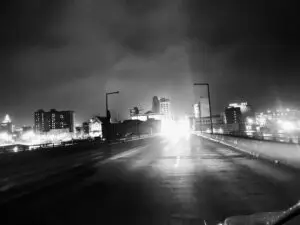
Youngstown, Ohio—On March 13, 2025, a packed courtroom witnessed the emotional conclusion to a tragic case that has gripped the community for nearly two years.

On March 2, 2025, residents throughout Ohio, including communities in Columbiana, East Palestine, Youngstown, Warren, Boardman, Akron, Canton, and neighboring areas, experienced significant disruptions in

In today’s rapidly changing world, safety and security have become more critical than ever. Ohio Security & Investigations stands at the forefront of the industry,

MASURY, OHIO — A tragic shooting has left a 65-year-old woman dead and her brother in custody, prompting shockwaves through the tight-knit community of Masury.

In recent months, rental scams have become a growing issue across social media platforms like Facebook and Craigslist, affecting residents in the Youngstown, Warren, Akron,
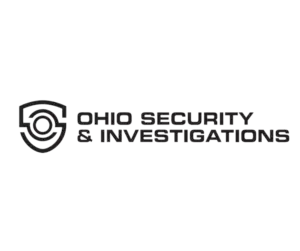
In a significant milestone for Austintown, Valorie Delmont has been named the new police chief. The announcement was made by Township Trustee Bruce Shepas during
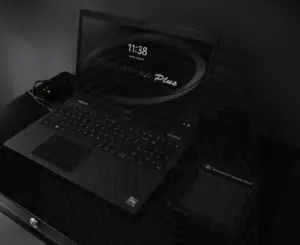
Ohio Security & Investigations is proud to offer state-of-the-art biometric fingerprinting services for both the Bureau of Criminal Investigation (BCI) and Federal Bureau of Investigation

Ohio Security & Investigations is proud to offer state-of-the-art biometric fingerprinting services for both the Bureau of Criminal Investigation (BCI) and Federal Bureau of Investigation

In today’s interconnected and rapidly changing world, the principles of Diversity, Equity, and Inclusion (DEI) stand as pillars for organizational success and societal progress. DEI
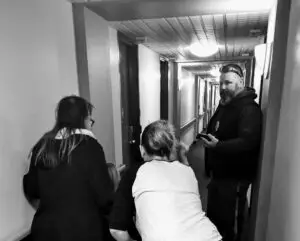
Pierog’s Detective Agency stands out as New Castle, Pennsylvania’s premier private investigation firm for several compelling reasons: 1. Wide Range of Services: They offer a comprehensive
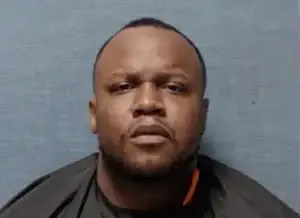
Christian Clark, a 38-year-old resident of Canton, Ohio, was recently apprehended in connection with a significant drug bust. Law enforcement officials executed a federal search

Navigating the complexities of modern life can leave individuals feeling overwhelmed and lost. The emotional turmoil of a missing loved one, the suspicion of infidelity,
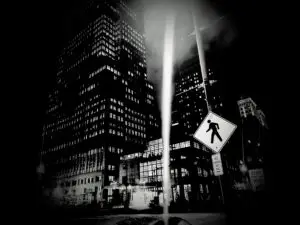
The bass vibrates through your chest, a physical manifestation of the club’s throbbing energy. But this pulsing rhythm is relentlessly counterpointed by another, far more

When most people think of executive protection, they often envision imposing figures in dark suits, providing an overt, almost intimidating presence around their clients. However,
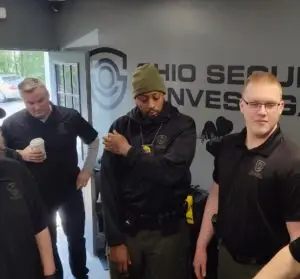
In an era defined by escalating uncertainty, the demand for robust and reliable security solutions has reached unprecedented heights. The protection of high-profile individuals, corporate

In today’s complex world, the need for reliable and discreet investigative services is paramount. Whether navigating legal battles, protecting business interests, or ensuring personal safety,

It was an honor to provide executive protection (EP) for UnitedHealthcare employees at the 2025 IN-VALUE-ABLE Conference Series & Expo, held at the Huntington Convention
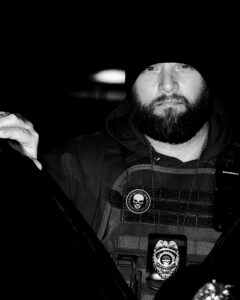
Introduction In a world where safety and security concerns are increasingly pressing, the role of professional security guard services has never been more critical. This
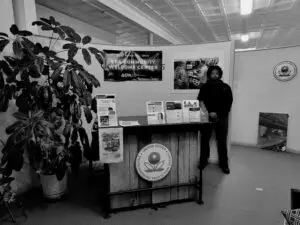
Introduction In an era where security has become a paramount concern for businesses, the importance of armed security guard services cannot be overstated. For business
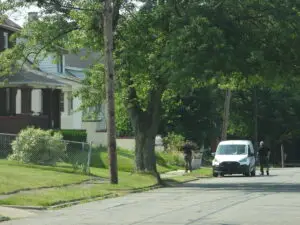
Introduction The topic of infidelity remains a pervasive issue in modern relationships, often leading to emotional distress and significant repercussions for individuals and families. As
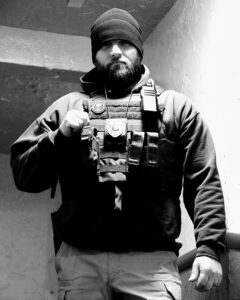
Introduction Domestic violence is a pervasive issue that affects individuals across all demographics, leaving deep emotional scars and, unfortunately, sometimes leading to tragic outcomes. The

Introduction Employee termination is an inevitable part of managing a business. However, when an employee is deemed high-risk, the stakes are significantly raised. High-risk terminations

Suspecting infidelity can be an incredibly distressing and deeply unsettling experience. We deeply understand the profound emotional turmoil and heartbreak such suspicions can bring. We

The shooting in St. Clair Township, Ohio, on Wednesday is a devastating tragedy. A four-year-old child lost her life, and a police officer was left
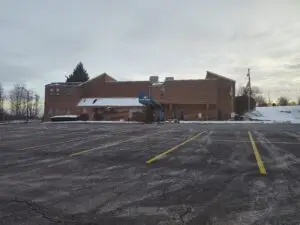
Choosing the right eye care provider profoundly impacts not only our vision but also our overall well-being. A comprehensive and personalized approach is crucial, especially
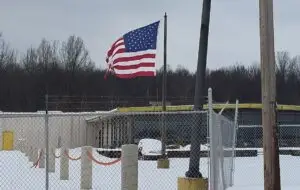
18 U.S. Code § 700 details the legal penalties for flag desecration Hubbard, yet the law’s stark language fails to capture the profound emotional resonance
This memorable domain, available for $5,000, offers the perfect foundation for building a powerful brand. Ohio Security & Investigations, a trusted industry leader, ensures a
This memorable domain, priced at $2,500, is ideal for building a strong brand. Seamless ownership transfer is guaranteed by Ohio Security & Investigations, a trusted
This memorable domain, available for $2,500, is ideal for building a strong brand identity for your security business. Offered by Ohio Security & Investigations, a
OhioInfidelity.com is available for purchase at $2,500. This memorable domain is ideal for establishing a strong online brand. It is offered by Ohio Security &
This memorable domain, available for $2,500, is ideal for building a strong brand identity for your security business. Offered by Ohio Security & Investigations, a
CheatersCheck.com is available for purchase at $2,500. This memorable domain is ideal for establishing a strong online brand. Offered by Ohio Security & Investigations, a
Secure your online presence with CrashoutSecurity.com—a premium domain name available for just $2,500. This memorable and impactful name is ideal for a security company seeking

Akron, Ohio, now boasts a new, highly reputable source for efficient, convenient, and affordable notary services. Our commitment to accuracy, legal compliance, and exceptional client

At Ohio Security & Investigations, we have transformed the fingerprinting process into a quick, accurate, and hassle-free experience. Our LiveScan fingerprinting service in Akron stands

The multiple accidents across Northeastern Ohio yesterday, affecting communities from Hubbard and Youngstown to Akron and Canton, serve as a stark reminder of the vital

In today’s competitive food industry, maintaining impeccable hygiene standards is paramount. A single incident of foodborne illness can irrevocably damage a brand’s reputation, leading to

The remarkable success of Ohio Security & Investigations, LLC, and 10-8 Protective Services LLC is not just a story of two thriving security firms; it’s

Ohio’s bail system stands as a crumbling foundation upon which a just and safe society cannot be built. The alarmingly low bail amounts set for
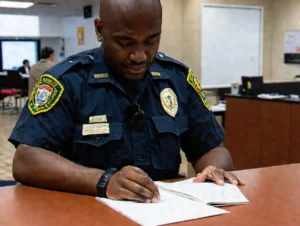
Youngstown, Ohio, like many urban centers, relies on private security firms to supplement public safety efforts and protect its businesses and residents. However, a critical
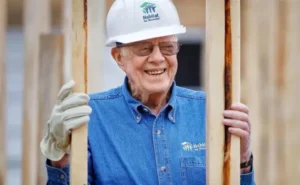
The passing of Jimmy Carter at the age of 100 marks the end of an extraordinary life, one that transcended the confines of a single

Youngstown, Ohio, a city with a rich and storied history, stands as a testament to resilience and determination in the face of numerous challenges. As
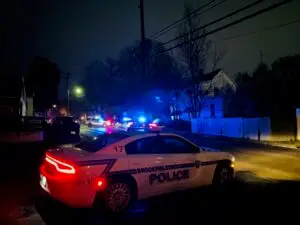
A tense standoff in Masury, Ohio, has escalated into a significant police response, drawing officers from multiple jurisdictions. The situation began with a call about
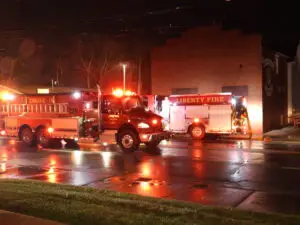
A fire broke out at Pizza Works in Hubbard, Ohio, on Sunday, December 15, 2024, at approximately 5:59 PM. Firefighters from Liberty Township, Brookfield, and

Authorities are urgently seeking the whereabouts of Vincent Marbley and Eddie Winphrie, both of whom are wanted by the Youngstown Police Department and the United
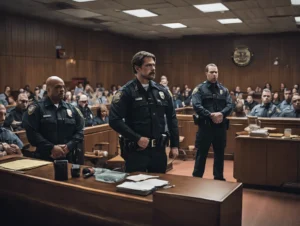
A Youngstown man has admitted guilt in federal court for his involvement in firearm and drug trafficking offenses. Antoine Tate, 43, entered his plea on
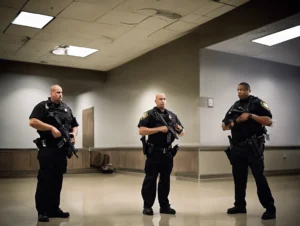
In today’s society, the issue of violence in Ohio has led to an unprecedented focus on personal safety. Increasingly frequent reports of violent incidents have

🌟🔒 Attention Youngstown Business Owners: Elevate Your Security with Ohio Security & Investigations! 🔒🌟
To all businesses in Campbell, Struthers, Poland, Youngstown, Canfield, and Austintown—are

The security industry is undergoing profound changes, driven by increasing demand, rapid technological advancements, and a fresh understanding of what it means to ensure safety
I am so very satisfied with my services!!! This team was professional, very well equipped and knowledgeable. This staff was personable and understood my situation. They gathered information as quickly as possible and had completed the task at hand with speed and accuracy! My daughter means the world to me, so I appreciated that they returned her back home with me where she belongs. Thank you!!!
Great experience and great to work with. Very polite and professional. I would recommend this company to anyone in the tri-county area.
fully aware professionals detailed reports with every action taken they truly go over an beyond for the tenants and our staff.
Patrick, Brian and the whole team at Ohio security and investigation really came through for me. I was at a loss on how to handle a breakup and kept hearing about how my ex had been cheating and using me the entire time. I got the team started and within 2 weeks they had found a pattern of abusive manipulative behaviors from multiple ex girlfriends. Lying cheating and stealing were a game for him. This whole team took me under their wing and made sure I was safe as they planned and executed the retrieval of my items. I will be forever grateful for my life back.

Hired to handle service in Ohio. Did what they said they would when they said they would. Communicated when there were difficulties locating the people to be served. I felt like they actually cared about doing a good job, not just doing a job. Would definitely use them again.
Patrick handled my case with unwavering honesty and professionalism. He meticulously documented everything while providing video and photographic evidence of my husband's infidelity. I was deeply grateful for his careful attention to detail; it offered me the clarity I had so desperately needed.

My fiancee and i have used Patrick at Ohio Security & Investigations multiple times ( for servance on custody and divorces both in OH and PA ) and will continue to do so. Fast, thorough, and reasonably priced.
The Sheriff failed to serve my defendant twice, but Ohio Security & Investigations got it done the first day after I hired them! I would definitely work with them again in the future.
Was able to get in the next day for fingerprinting. Office is in a convenient location.

Owner was very pleasant and knowledgeable great service!!

They were extremely accommodating and let me come in immediately after hours for a background check.

I needed fingerprinted to obtain an Ohio notary commission. They were able to get me in same day and I was in & out in no time. 5-star service all around!

Very helpful, quick to respond and went out of the way to help me! Thanks again

Was able to help me the same day.

Patrick was fast, efficient and knowledgeable. The process was smooth and convenient. 10/10 would recommend.

My law firm's experience with Ohio Security & Investigations was outstanding. OS&I went above and beyond in handling the investigative matter and produced an in-depth investigative report. Highly recommended.

Very positive, successful outcome!! the best people to do business with!!

